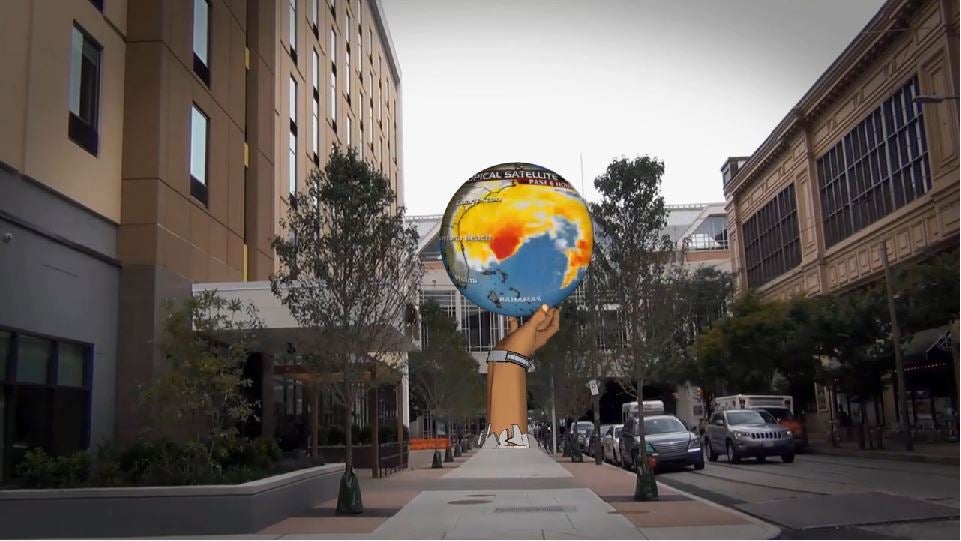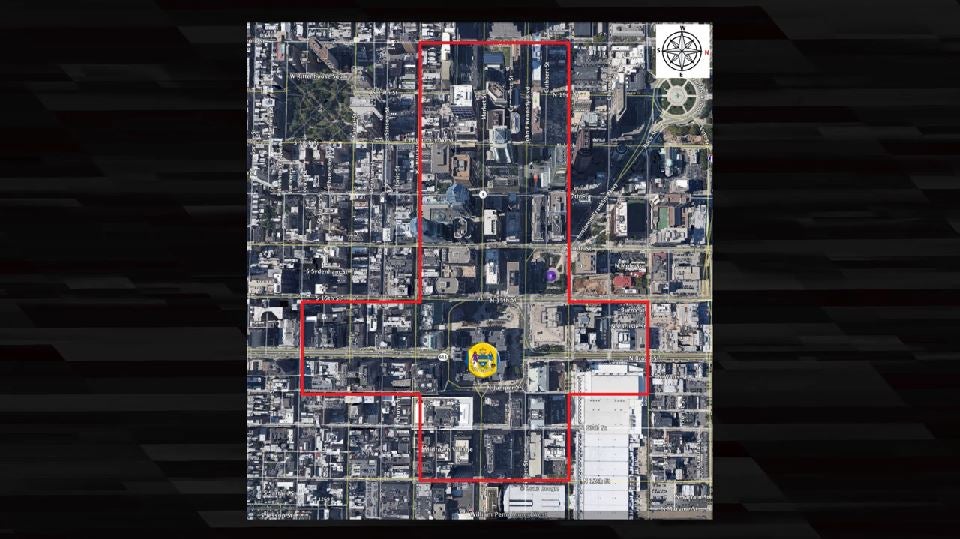Bill could permit three-dimensional digital advertisements on Center City sidewalks

A bill introduced by Councilman Mark Squilla on Thursday would allow companies to construct digital, three-dimensional advertising structures in certain areas of Center City. The proposal was first reported by the Philadelphia Business Journal back in April.
The bill was developed by Catalyst Outdoor in cooperation with people in city government and community groups, according to the Business Journal. Joe Zuritsky, a parking garage magnate, carp enthusiast, and prolific donor to local political campaigns, is a supporter of the proposal.
In a press release, Catalyst said the displays could be placed initially at the Bellevue Garage, at the corner of 12th and Arch, and near the Convention Center at Broad and Race. Each display operator would be required to commit $5.2 million to a local community group operating in the same Councilmanic district as the display. The first three groups to receive that commitment will be the Center City District, the Avenue of the Arts District, and the Reading Terminal Market, according to the release.
The bill introduced on Thursday creates a new overlay category for what are called—just going to copy down what’s in the text here—“Urban Experiential Displays.” These would be structures of various shapes and sizes that display commercial advertisements as well as information provided by the City of Philadelphia and certain nonprofit groups to be selected by the Center City District.
The displays would be permitted to operate between the hours of 6 a.m. and midnight. They would be allowed on municipal property and on private property in lots that are zoned CMX-4 and CMX-5, the two highest-density commercial zoning categories in the city. They would be “permitted to project over, or encroach upon, a city sidewalk or right-of-way,” subject to review by the Streets Department and a Council ordinance.
The UEDs would be permitted in certain areas within a district bounded by, very roughly, 12th to 20th streets and Arch to Chestnut streets.

They would be prohibited within 500 feet of residential areas, parks, the Benjamin Franklin Parkway, the Vine Street Expressway, Route 76, and Interstate 95. They would also be prohibited within 900 feet of one another.
A separate bill would regulate the noise output of the displays. For displays located in a public right-of-way, the noise output could not exceed 5 decibels above background level as measured from the nearest residence, 10 decibels above background level as measured from the nearest non-residential property, and 15 decibels above background level outside a 10-foot radius.
The structures would have a minimum digital display area of 1,500 square feet and a maximum display area of 3,500 square feet. The bill also contains limits on the brightness of the displays that would change depending on the ambient brightness.
Each display would require a minimum investment of $2 million. In addition, the bill requires that permits for each display be withheld until the display operator has a plan of development approved by the City Planning Commission. As part of that plan of development, the applicant would need to provide “executed agreements between the Applicant and one or more non-profit community organizations that promote, maintain, and reinvest into the Councilmanic district in which the UED is to be constructed.”
The license fees for the displays would be $10 per square foot, or between $15,000 and $35,000 annually for each sign.
Each structure would be required to display City information 8 percent of the time, nonprofit information 8 percent of the time, and “Originally Created Content” 11 percent of the time. The rest of the time would be given to commercial advertising, which could be interrupted for emergency alerts.
“Originally created content” is defined as “time sensitive information and infotainment, that is relevant to the public that lives, works, and visits the City of Philadelphia.” It could include, according to the bill, news, weather updates, financial information, movie and book reviews, restaurant information and cooking tips, technology reviews, travel information, and employment information.
Watch a promotional video about the proposal here.
PlanPhilly will have more as this proposal develops.
WHYY is your source for fact-based, in-depth journalism and information. As a nonprofit organization, we rely on financial support from readers like you. Please give today.



